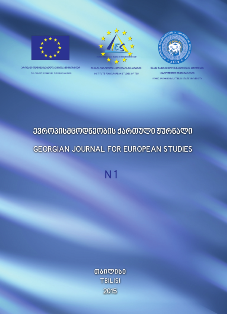Similarities and Differences: EU’s Relations with the Visegrad Countries, Western Balkans, EaP Countries
Abstract
Abstarct
The paper discusses the European Union's (EU) relations with the Visegrad countries, Western Balkans, and Eastern Partnership (EaP) countries, analyzing the similarities and differences in these relationships. It begins by examining the EU's enlargement over the past 20 years, focusing on the Visegrad countries' accession and their journey toward EU membership. It explores how the EU has developed strategies and criteria for integrating countries, including establishing monitoring mechanisms, conditional agreements, and structured negotiations.
The study highlights the EU’s approach towards the Western Balkans, where cooperation revolves around stability, security, and regional development. The Western Balkans have adopted several agreements similar to those used with the Visegrad countries, such as the Stabilization and Association Agreements (SAPs), to promote reforms and regional collaboration. The research further discusses the EaP, which comprises Armenia, Azerbaijan, Belarus, Georgia, Moldova, and Ukraine. It emphasizes that the EaP countries have different membership perspectives compared
to the Visegrad and Western Balkan countries due to the lack of clear EU accession incentives.
Despite these variations, the paper finds numerous similarities in the EU’s strategies, including conditionality, monitoring, and incremental domestic changes. The EU applies a merit-based approach to these countries, incentivizing them to align with European standards and norms, while maintaining a complex mechanism for monitoring progress. However, the lack of direct membership opportunities for the EaP countries represents a significant divergence from the strategies used with the Visegrad and Western Balkans.
The paper concludes that although the EU’s overall approach is consistent in fostering cooperation and alignment with European values, the membership prospects and political conditionality differ significantly across these regions, shaping the nature and depth of their relationships with the EU.


